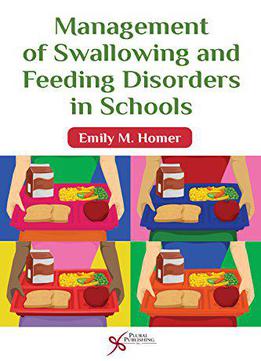
Management Of Swallowing And Feeding Disorders In Schools
by Emily M. Homer /
2015 / English / PDF
1.6 MB Download
Management of Swallowing and Feeding Disorders in Schools examines the most significant issues in swallowing and feeding facing school-based speech-language pathologists (SLPs). Topics addressed are unique to the school setting, ranging from organizing a team procedure in a district to serving children with complex medical issues, behavioral feeding disorders, and neurological feeding disorders. Ethical, legal, and cultural issues are also addressed. Many students in school districts across the country exhibit the signs and symptoms of dysphagia, and children who were originally treated for dysphagia in hospitals and other settings often begin attending public schools at three years old. The difficulty they had with swallowing and feeding frequently follows them to the school setting. Further, there are many students who develop swallowing and feeding disorders as a result of traumatic brain injury, neurological disorders and syndromes, behavioral disorders, and so forth. The range of students needing services for swallowing and feeding disorders in the school setting can be from three to twenty-two years of age and from mild dysphagia to tube feeding. The identification and treatment of swallowing and feeding disorders in schools is relatively new. There are still many districts in the country and internationally that do not address the needs of children with dysphagia. As school-based SLPs take on the challenge of this population there is a need for information that is current, accurate, and thorough. University programs include very little training, if any, at this time in the area of swallowing and feeding in the school setting. This text is appropriate for both a dysphagia course as well as courses that train SLP students to work with school-aged students.











